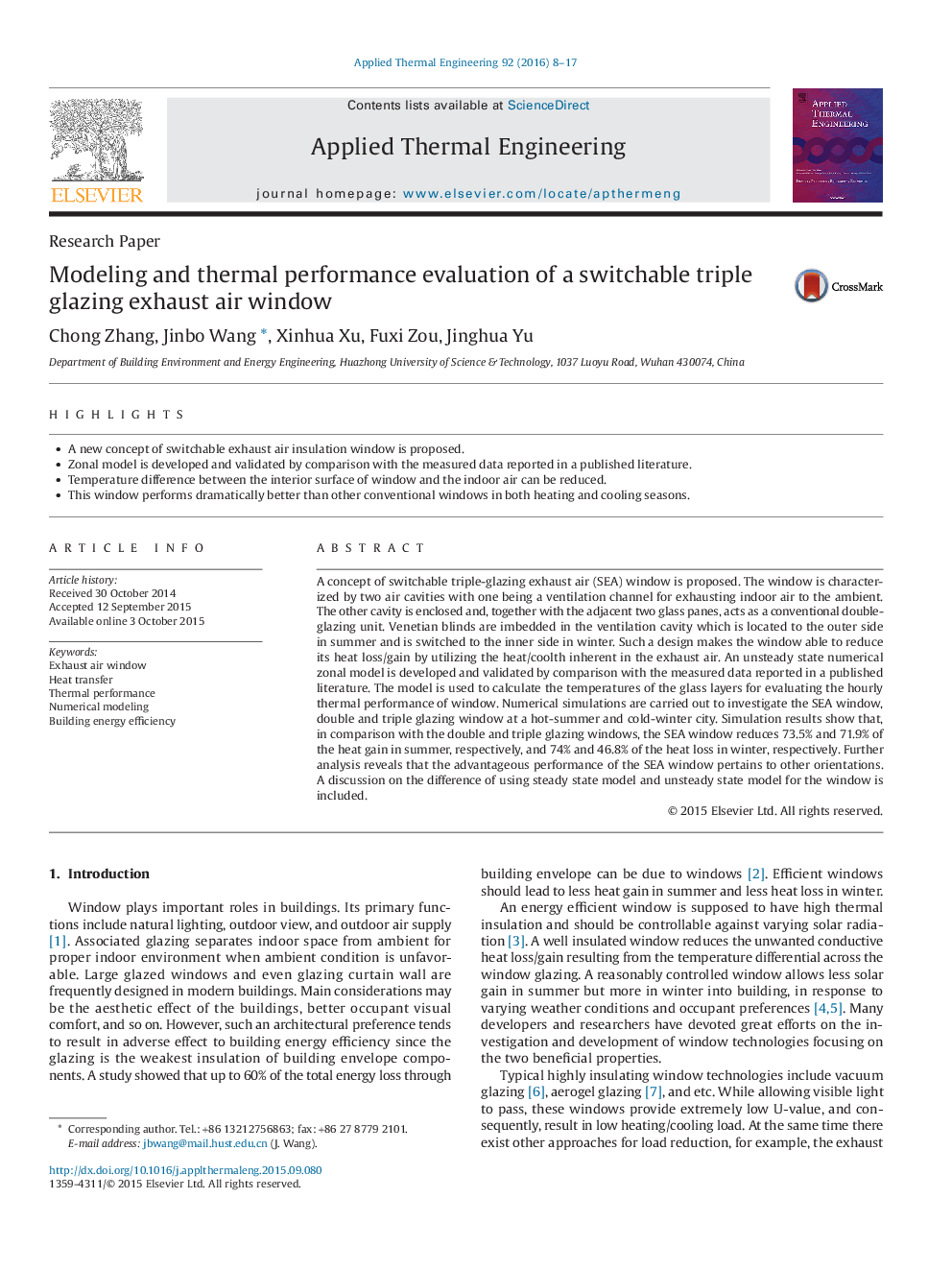| کد مقاله | کد نشریه | سال انتشار | مقاله انگلیسی | نسخه تمام متن |
|---|---|---|---|---|
| 645017 | 1457136 | 2016 | 10 صفحه PDF | دانلود رایگان |
• A new concept of switchable exhaust air insulation window is proposed.
• Zonal model is developed and validated by comparison with the measured data reported in a published literature.
• Temperature difference between the interior surface of window and the indoor air can be reduced.
• This window performs dramatically better than other conventional windows in both heating and cooling seasons.
A concept of switchable triple-glazing exhaust air (SEA) window is proposed. The window is characterized by two air cavities with one being a ventilation channel for exhausting indoor air to the ambient. The other cavity is enclosed and, together with the adjacent two glass panes, acts as a conventional double-glazing unit. Venetian blinds are imbedded in the ventilation cavity which is located to the outer side in summer and is switched to the inner side in winter. Such a design makes the window able to reduce its heat loss/gain by utilizing the heat/coolth inherent in the exhaust air. An unsteady state numerical zonal model is developed and validated by comparison with the measured data reported in a published literature. The model is used to calculate the temperatures of the glass layers for evaluating the hourly thermal performance of window. Numerical simulations are carried out to investigate the SEA window, double and triple glazing window at a hot-summer and cold-winter city. Simulation results show that, in comparison with the double and triple glazing windows, the SEA window reduces 73.5% and 71.9% of the heat gain in summer, respectively, and 74% and 46.8% of the heat loss in winter, respectively. Further analysis reveals that the advantageous performance of the SEA window pertains to other orientations. A discussion on the difference of using steady state model and unsteady state model for the window is included.
Journal: Applied Thermal Engineering - Volume 92, 5 January 2016, Pages 8–17
